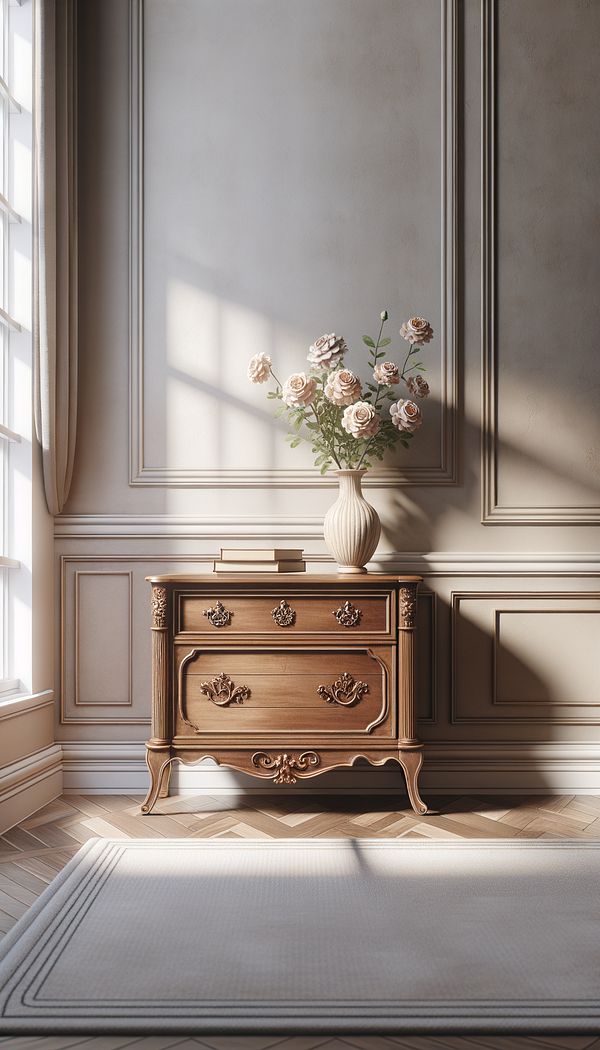What is a Commode?
A commode is a type of cabinet or chest of drawers, often used for storing clothing or personal items.
Description
In the realm of interior design, a commode is more than just an elegant piece of furniture; it's a functional and often decorative asset to any room. Originally derived from the French term for "convenient" or "suitable," commodes were first introduced in the 18th century as a fashionable addition to bedrooms or dressing rooms for storing clothing and personal items. Today, they can be found in various styles, ranging from the elaborate and ornate designs of the Baroque and Rococo periods, to the clean, minimalist lines of modern furnishings.
A commode typically features a set of drawers or a cabinet space, making it an ideal solution for storage or organization. It's not unusual to see them used in living rooms, hallways, or even dining rooms, serving double duty as both storage units and display surfaces for decorative objects or artworks. The versatility and practicality of commodes make them a popular choice among interior designers and homeowners alike.
The design and materials of a commode can vary widely, from wood and metal to mirrored surfaces or intricate marquetry, reflecting the design aesthetics of different historical periods and modern tastes.
Usage
A classic wooden commode with ornate handles might be used in a traditional bedroom setting to store clothing, while a sleek, modern design could be placed in a living room as an elegant console that houses media accessories or serves as a display for contemporary art.
FAQs
-
What is the primary function of a commode?
The primary function of a commode is to provide storage space, typically for clothing or personal items, but it can also serve as a decorative piece of furniture in various rooms.
-
Can a commode be used in any room?
Yes, while traditionally used in bedrooms or dressing rooms, commodes can effectively be utilized in living rooms, hallways, dining rooms, and more, acting as both storage and decorative elements.
-
Are all commodes antique?
No, commodes come in a range of styles from antique to contemporary, reflecting various design periods and modern tastes.
Practical Application
When considering adding a commode to your space, think about both its functionality and style. Ensure it complements your room's aesthetic while offering the storage solutions you need. Also, consider the top surface for decorating with vases, books, lamps, or artwork to add a personal touch to your space.
-
Design Styles478 articles
-
Furniture Types599 articles
-
Decorative Objects240 articles
-
Storage & Organization79 articles
-
Accent ColorAn accent color is a color used sparingly to add vibrancy and interest to a room.
-
Knock Down A WallKnocking down a wall involves the process of removing a wall to open up space or change the layout of an interior.
-
GuillocheGuilloche is a decorative technique involving intricate, interlacing patterns.
-
Crown MoldingCrown molding is a decorative trim installed where the wall meets the ceiling.
-
Dust CoverA dust cover is a protective fabric lining attached to the underside of furniture.
